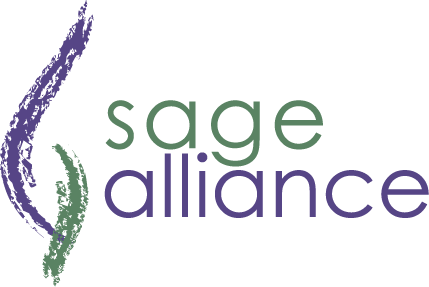
1. Find Positive Role Models
Look for positive role models: individuals who exhibit the behavior you want to address. Observe their interactions and, better yet, ask them for advice on how you can go from where you are to where you want to be. You can also ask people around you for suggestions about how you could achieve positive change in the area you wish to develop. – Craig Dowden, Craig Dowden & Associates
2. Don’t Shame Yourself
Don’t feel ashamed or guilty because of your weakness. Acknowledge what you could improve on and try to manage it by finding someone you can collaborate with or hire onto your team who can do what you can’t. Let stakeholders know what your strengths are so that you are trusted for your competence. Let others know about your weaknesses, your strengths and your ability to collaborate with people. – Devika Das, CORE Executive Presence
3. Get Outside Of Your Comfort Zone
First, face the facts—you can’t “fix” a problem until you can recognize it. Second, prepare to get uncomfortable—comfort zones hold us back more than anything else. Third, set goals, timescales and early milestones—and track them. Fourth, ask people for help with and feedback on the issue. – Antonio Garrido, Absolute Sales Development
4. Involve Your Stakeholders
Include your stakeholders in the design of your game plan when focusing on a weakness. Their input is critical to giving you feedback so that you can design specific action steps to turn this opportunity into a strength with information that otherwise may have not come into your vision. Design consistent ways to provide them with updates on your progress, which will increase your accountability. – Bryan Powell, Executive Coaching Space
5. Admit That You Have A Weakness
“I know that I do not know.” This old wisdom of Socrates is especially true for leaders. It is not a weakness to admit that you have a weakness. As a leader, your weakness would be not to have a team member who has strength where you have weakness and who is the go-to expert. – Michael Thiemann, Strategy-Lab™
6. Find Someone You Can Emulate
Find someone you can emulate who exemplifies the strength you desire. Interview them to identify best practices they use that you can implement. Set no more than three measurable goals with an associated timeline. Establish an accountability partner to help keep you on track. Leverage them as a sounding board to see what works and does not work, and get feedback on when to pivot and when to track progress. – Shelley Hammell, Sage Alliance, Inc.
7. Practice Self-Awareness
One perspective is that strength and weakness are two sides of the same coin. This requires, first, awareness of the “weakness” and a set of coping strategies that taps into the environment to convert the seemingly negative situation into an opportunity. Once these strategies are habituated, new neural pathways will open up and the mind will transform the weakness into something positive. – Thomas Lim, Singapore Public Service, SportSG
8. Consider Your Resources And Attitudes
No one is so bad that they could not at least serve as a bad example. Which resources, attitudes and competencies—what ways of dealing with oneself when experiencing this weakness—and what kinds of interactions in the respective relationship system are needed so that “enrichment” can be experienced? And most important, who defines the definition of weakness anyway? – Cristian Hofmann, Empowering Executives | SUPERGROUP LTD
9. Challenge Yourself
Immerse yourself in an environment that will precisely challenge this weakness and force you to go beyond to overcome the situation. You will thus get out of your comfort zone, increase your self-confidence and change your perception of your real abilities. – Andre Shojaie, City of Montreal
10. Focus On Your Strengths Over Weaknesses
It’s a myth that our weaknesses (a.k.a. development areas) represent our biggest growth opportunities. Recent research suggests that focusing on strengths results in a happier and more successful life. We should only concentrate on a weakness if it severely impacts our well-being or performance—and, in such a case, we must concentrate quickly, directly and rigorously with professional help. – Andreas von der Heydt, Andreas Von Der Heydt Coaching & Consulting
11. Visualize Closing The Gap
A thought remains fleeting until we give it attention. Once we do, it elicits an emotion within us that gives rise to some behavior or action. Give attention to your weakness and notice how you feel about it and what behaviors you display as a result. They are likely to be negatively skewed. Now, consider the opposite: How do you want to actually feel? Then visualize what’s required to close the gap. – Arthi Rabikrisson, Prerna Advisory
12. View ‘Weaknesses’ As ‘Development Areas’
Personally, I avoid the word “weakness” and instead use “development area.” In this way, insights into and ways to focus on what a leader needs for their job role, to lead their team and to serve stakeholders can be prioritized. With diverse teams, leaders should grow their strengths and have people around them that are fabulous in their areas of development. This can save time, effort and money. – Clare Beckett-McInroy, Qatar Foundation
SAGE Alliance, a Leadership Performance Company; provides executive coaching, team-building, industry leading assessments, workshops and speaking on topics including: building a high-performing team through coaching, developing and optimizing your top talent, delivering commanding communications, creating a lasting impression, making a greater impact through personal branding for executives and high-potentials – for both team and individual leaders.
Shelley Hammell, is the president, CEO and author of You Think You’re Coaching, But You’re Not! available HERE, and is available for book signings and speaking engagements.
